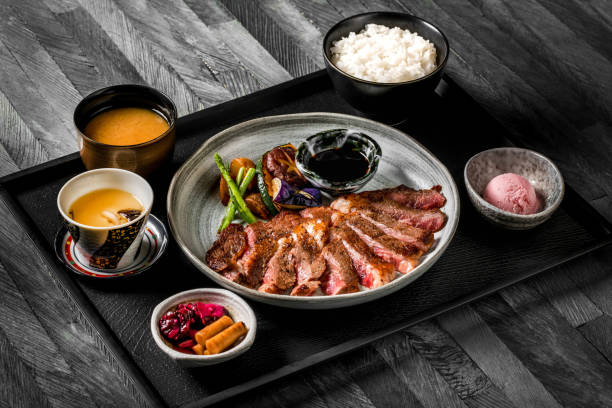Many food-lovers dreams of opening their restaurant. It is not easy to start a food business. It takes a lot of business operations skills to get started.
These steps will help you understand the requirements for starting a food business and what you need to consider before diving in.
9 Steps to starting a food business
Step 1: Evaluate your skills
We can assume you have an idea for a food business that you are interested in starting. That’s great! Although interest is the most important step in starting your business, it’s also important to assess your abilities and assets before you jump into starting one.
Although passion can go a long way in a business, it’s not enough to make it a success. You also need to be able to work hard and have business sense. Although many business owners aren’t experts, they can find resources to help them when they run into problems. This is a valuable lesson that you need to learn quickly.
Although there are many concrete steps involved in starting a small food company, such as choosing a business structure and funding, there is also the question of “Are you ready and capable of doing this?”
Before you begin, take some time to reflect on your strengths and consider your support networks. Next, brainstorm your resources.
You will need to be able to manage a food business.
- Payroll
- Fire and hire employees
- Buy from suppliers
- Marketing
- Create a menu
- Real estate
- Equipment purchase
- There’s so much more…
Now it’s time for the concrete details.
Step 2: Develop a business plan
Your small food business can reap multiple benefits from a business plan. It is a great way to put your ideas and plans down on paper. This can also be useful to refer to as you go along the journey of opening and running your business. If you are looking for financing to start your food business, a business plan is a great idea.
SCORE offers great resources to assist you in writing a business plan for a food business. Although it can be daunting to create one, you likely have many great ideas to add to your plan if you are researching how to start your own food business. Here are some steps to follow when creating a business plan.
1. Make a budget for your business
The business budget is an important part of any business plan, especially seeking funding.
The business budget includes all costs associated with the start-up of the business. It also covers the funds required to run the business after it is up and running.
Here are some examples of costs and considerations when starting a food company:
- Which type of food business are you starting?
- Cost of management and employees
- Equipment
- The initial investment in food products
- Real estate
- Design for a physical space
2. Examine your competition
When you are preparing your business plan, it is important to begin looking at your competitors and assessing them. The food market is highly competitive, and many markets are saturated. Before starting your small food business, it is important to find out who and what they are doing.
When looking at your competitors, be sure to evaluate what they have going for them. This will help you identify the gaps in your business.
It’s a great time for you to look at prices and assess the costs of running a business and the actual amount of money that you can make.
3. Find a gap in the market
A gap in the market is the ideal place to start a food business. Is there a customer need that is not being met? It doesn’t matter if no one else is doing it. To make a profit, customers must want it and buy it.
You can identify a gap in the market and decide what type of food to sell. You have many options when it comes time to sell your food.
- Meal delivery
- Other food establishments can purchase baked goods
- Food business from home
- Food truck
- Catering for special events and weddings
4. Choose a concept
It is important to choose the type of food business you want when starting a food company. There are three main options: a brick-and-mortar restaurant, a food truck or a home-based catering company.
Each option is viable for starting and running your business. One type of business might be preferred over another in the hope of eventually moving to another. While both a food truck and a home-based catering company have their challenges, they require less capital than full-fledged brick-and-mortar restaurants.
Step 3: Start your business.
After you have done your market research and identified the gaps in your market, you are ready to start your food business.
1. Select a business entity
First, you must choose a business entity to start your food business. There are many options available and, depending on your needs, the right one for you.
Co-ops, sole proprietorships, and LLCs are small food companies’ most popular business entities. There are also options for partnerships, S-corporations and C-corporations.
Sole proprietorship
The sole proprietorship is one of the easiest business structures. A sole proprietorship is a simple business structure popular with food establishments. However, it has limited protection. If someone becomes ill from eating your food and wishes to sue your business, they would have to sue you. They could also pursue your assets for compensation.
LLC
An LLC is one level above a sole proprietorship. An LLC, or limited liability corporation, is a legal entity separate from the business owner. An LLC reduces the personal liability of business owners. An LLC provides tax efficiency for businesses and is simple to set up. This makes it ideal for food business owners who want to control taxes and be protected.
Cooperative
A cooperative, also known more commonly as a cooperative, is a business structure owned and managed by multiple individuals. Each owner or member of the cooperative owns a part of the business. Co-ops are a common type of business and are very popular among food businesses, particularly those that produce food and sell it at grocery stores and farmers’ markets.
It can be difficult to choose the right business structure for your food business. If you decide that you have the wrong business structure for your new venture, you can change it. You can consult a business lawyer to help you choose the right structure for your business.
2. Register your company
Registering for an EIN (federal employee identification number) from the IRS is a good idea if your company plans to hire others. You can apply online for one in just minutes. This step is highly recommended.
You will likely need to register your company with the state where you operate. The exact rules for doing this vary from one state to the next, but you can find this information on your state’s Secretary Of State website. Before you register your business, make sure to search for business names in your area.
3. Register for all licenses required
It is important to ensure that you are legally licensed to sell and prepare food. Food businesses require many licenses and certifications.
Important to remember that license requirements will vary depending on the type of establishment you are opening, whether you intend to sell alcohol or where you live. There may be slightly different requirements for food establishments in different localities.
These are the types of certifications and licenses that you may need to operate a food business.
- A food handling permit
- For your restaurant, a Certificate of Occupancy (CO) is required
- To sell alcohol, a liquor license is required.
- You can get a food license to sell and make food from your home
- To be able to buy wholesale ingredients, you will need a resale license
You will need permits and licenses, no matter what kind of food business you start. The local government office will help you determine which licenses are required for your business type.
4. Get insurance
You need insurance for your business if you have employees or a physical location hosts customers. You might consider:
- General liability insurance
- Business auto insurance
- Workers’ Compensation
- Insurance for commercial property
- Mobile food vendor insurance
5. Separate your finances
It doesn’t matter what type of business entity you choose for your business, and it is important to keep your personal and business finances separate. This will make it much easier to calculate your taxes and expenses.
You can open a second bank account to help your small business start. You can do this with your current bank account, but you may want to open a business checking account.
You can also apply for a separate credit card to be used exclusively for business purposes if you wish. You can build your credit by using a credit card for business purposes. This will allow you to increase your credit score (assuming that you pay your bills on time and use it responsibly). It could also help you get a loan.
Step 4: Search for financing options.
One of the most important concerns when thinking about starting a food business is how much money you will need. It can be expensive to start a business and take many months or even years before it becomes profitable.
Many new food businesses need funding to get started. They can seek loans or money from investors. Although banks are often reluctant to lend money to new business owners, bank loans can be one option. You can also look into other lenders.
1. Equipment loans
An equipment loan can be a great choice if you require expensive equipment or are considering buying a food truck. An equipment loan is simple: The equipment acts as collateral, and you receive a loan to purchase the equipment. The equipment may be repossessed if the loan is not repaid.
This loan is much easier than other types.
2. Family and friends can borrow money
Your family and friends are the best people to help you start a food business. Don’t be afraid of asking for help if you are saving money to start your business. Make sure you have a written loan agreement with your lender and that you stick to it.
3. Line of credit
For starting a food company, a line credit can be a great option. A line of credit allows you to access a pool fund. The fund allows you to borrow up to its limit anytime. This is a great choice for cash-strapped businesses and needs to borrow for short periods.
4. SBA microloan
The SBA microloan is available to food businesses that want to open a food truck or a restaurant that needs extra cash. The SBA microloan, which is up to $50,000, is guaranteed by the Small Business Administration. Because of its flexible repayment terms and low-interest rates, the SBA loan is the best on the market.
Step 5: Invest money in products and tools.
You will need more than cash and a business entity to start a food company. You also need equipment and food supplies.
1. Research suppliers
Your suppliers are one of the most important relationships you can form as a food company owner. Your suppliers are the people who ensure you have the products and food you need to run your business.
You might buy equipment and furnishings from a closed restaurant or purchase an excess stock that they have saved. You can often source your food locally, and trade magazines or professional organizations like the National Restaurant Association can help.
To ensure that you get your supplies at the lowest price and on time, find reliable suppliers. Your source of food can be a selling point for your food business. Sustainable companies are becoming more attractive to customers in recent years.
2. Point-of-sale system
Point-of-sale systems, also known as POS, are the modern cash register equivalent. The POS allows your waitstaff to take down orders, charge customers and collect payment from customers.
Many restaurant POS systems are available that provide enhanced functionality for staff.
- Clover POS
- Square for Restaurants
- TouchBistro POS
- Lightspeed Restaurant POS
- Toast POS
- Loyverse POS
Square is one example. You only need a card reader to conduct business. The free terminal can also be used if you have an Apple product. TouchBistro is a better choice for restaurants with full-service services. It offers tools for floor and customer planning and tools for POS. Your food business’s requirements will determine the best POS system.
3. You can rent or buy the supplies you need
Before you can open your restaurant to customers, you will need to have a lot of supplies.
You may need some supplies, aside from your POS system.
- Kitchen appliances
- Cold storage
- Cookware
- Flatware and utensils
- Glassware
- Furnishings for the Restaurant
- Cleaning supplies
You can purchase some of these in bulk. However, you may want to rent equipment depending on your business’s mobility. This might be cheaper. For example, if your catering business is small, you may not need a lot of flatware or utensils. Renting on a case-by-case basis will help you save money and allow you to understand the practical requirements of what you might need when you are ready to purchase.
Step 6: Hire staff
You may need assistance depending on the type of food business you are starting. Even the smallest establishment may need extra help to boost production. Your needs will dictate who you hire and how many you hire. A food truck may not have enough employees, while a restaurant with a large staff will need more people to ensure the floors are running smoothly.
Delivery drivers, waiters and dishwashers are just a few examples of the staff you may need. You may need to include hiring staff in your business plan.
Step 7: Set your pricing
Setting your pricing is one of the most crucial steps to starting a food business. It will be difficult to make money if you don’t set the right price for your food products.
1. Market research
Market research is a great way to determine the price you should charge for certain foods. Visit your competitors to find out what they are serving and their portions. Also, see how much they charge.
It gives you an idea of the price range for food. However, it is only a starting point. It gives you an idea, but it does not give you an insight into the business’s financial health.
Be aware of the latest food trends and how they impact consumer priorities. The wellness trends for food suggest that your business may do well if you have a health-conscious market and can sell your products on their health benefits.
2. Calculate the price of your product
It is possible to calculate the cost of a dish, even though it is difficult. It is important to consider all of the ingredients involved in a dish. Although this may seem overwhelming, professional chefs use many formulas and measurements to calculate these numbers. Make sure you read up.
With a little math and magic, you can price your product appropriately so you can make a profit, even if you include the labor cost to prepare, clean up, and clean up.
Step 8: Establish an online presence
Although you may think that a food company is only about the food, it’s not. You also have to attract customers who will eat your food. It is not easy to get into the food industry. Consumer packaged goods products account for 85% of all failures within two years. Establishing your online presence is an important step in avoiding this fate.
1. Social media
Food is not all about taste. Many diners shop with their eyes. Social media is a great way to quickly establish a presence online for your food business.
The best friend of a food business is Instagram. Customers will be drawn to your delicious photos of food. Engage with customers and show them that you are responsive to their needs.
2. Website
Although not all food businesses have a website, it can help establish their credibility. A website is where customers can find information such as menus, hours and specials. You have many options to create a website for your small food business. It’s easy to sell products online and add useful features like reservation widgets.
3. Online review sites
Although many food business owners hate reviewing sites, they are necessary for food truck operators, caterers, and restaurants. A TripAdvisor survey found that 94% of Americans check online reviews before ordering from a restaurant. This is the majority of diners. You can be a hateful owner of food business, but it is important to have a presence. Offer customers a bonus perk to encourage them to leave reviews.
Step 9: Serve up delicious foods.
When you think about starting a small food business, the main draw is the food. How you will cook it, what the taste is like to your diners, and any seasonal changes to the menu. It’s not just about the food. There are many aspects to running a food business. To ensure your success, you should learn as much as possible.
However, you should be equally dedicated to making delicious food!
Final thoughts
There are many food businesses that you can start, and there will be fierce competition. These nine steps will help you get started in your food business. You’ll be able to help your food business grow if you pay attention to the foundational steps like creating a business plan and registering all necessary licenses. Now, you can start to prepare your menu for the masses. You can do anything with a little planning and elbow grease.




